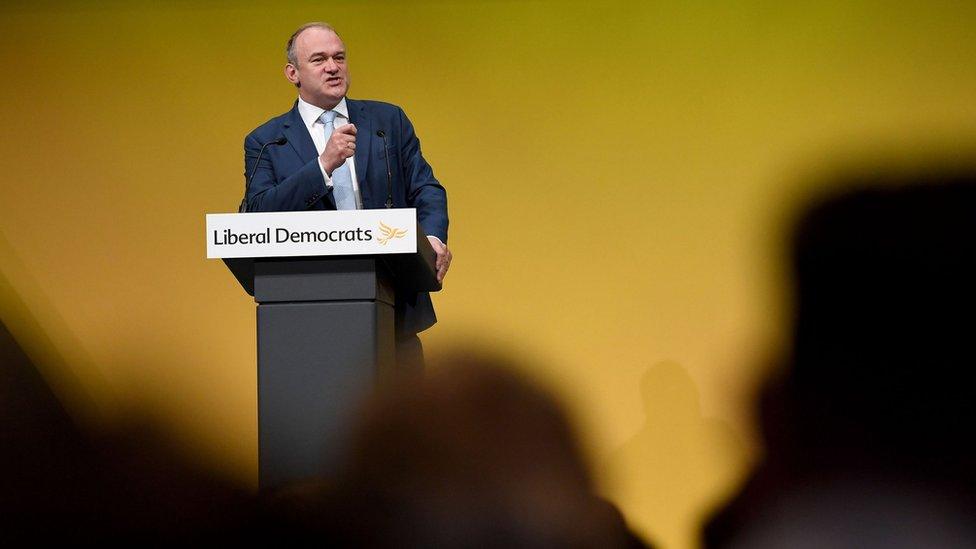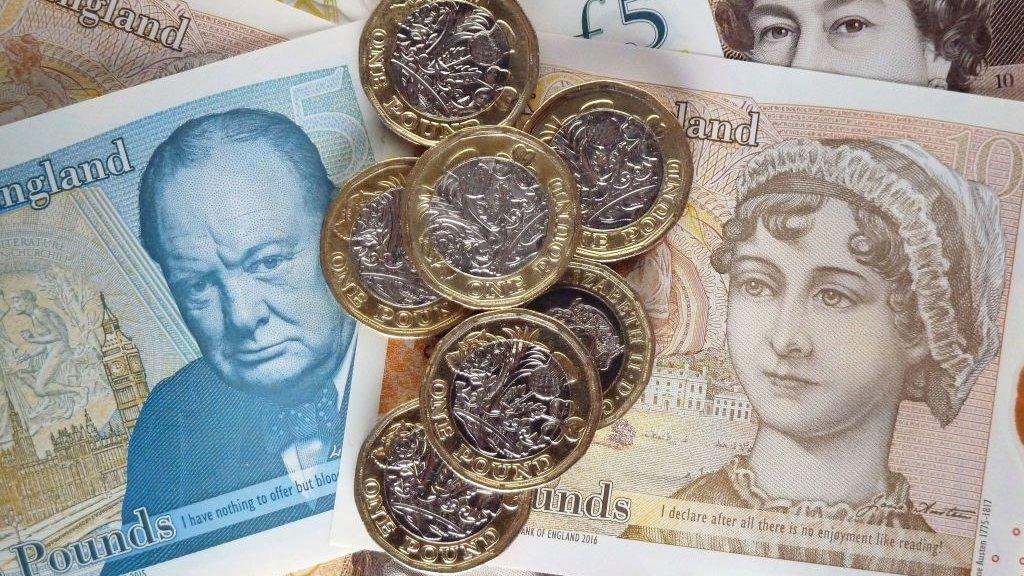Why did the Lib Dems go tough on spending?
- Published
- comments

The Liberal Democrats are, on the face of it, planning the most austere form of fiscal policy of the major parties.
Unlike both the Conservatives and the Labour Party, they have positioned their aim for the taxes raised annually over and above the day-to-day costs of public services to run a surplus of 1%.
This compares with aiming for balance - zero surplus or deficit - in three years for the Conservatives or five years for Labour.
It is stricter than both their fiscal targets and means more tax rises or spending cuts would be required.
"The Liberal Democrats are the only party of sound finance," said their shadow chancellor, Sir Ed Davey, in a speech this week.
In practice, this would mean, set against Labour or Conservative plans, having to find some tax rises or spending cuts immediately.
Sir Ed has promised to put up both corporation tax and capital gains tax for that purpose.
'Remain bonus'
Actually, the Lib Dems also assume what they call a "remain bonus" of extra tax income from a larger economy arising from not leaving the European Union.
Capital spending on future investments, such as railways and hospitals, would be allowed outside of this limit, but only where vetted by an independent watchdog to generate more money for the taxpayer than the initial cost of borrowing.
This is a similar plan to that outlined by Labour's John McDonnell, targeting not the stock of debt, but the increase in the value of assets, too - what is known as a "net worth" target.
It should allow considerable capital investment, £100bn of which would be spread out over the lifetime of the next Parliament to deal with climate change.
There is an extra £7bn for schools and college buildings and £10bn on hospitals.
There is an option to abandon the target in a downturn and, instead, target a current deficit of 1%.
But if there is no such occurrence, these rules on day-to-day spending are tighter than the others.
- Published19 November 2019

- Published20 November 2019

